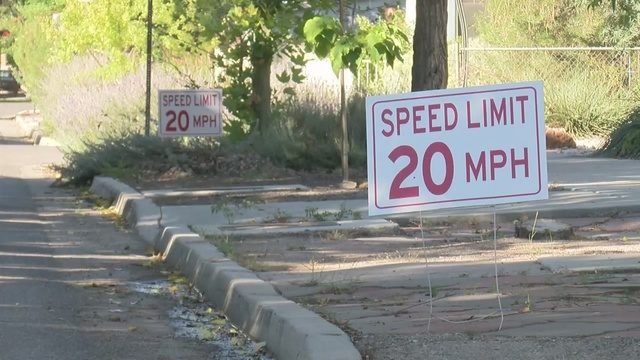City trying to speed up neighborhood traffic calming requests

By Chris McKee
ALBUQUERQUE, N.M. (KRQE) – A new push by the city should help neighbors get answers faster about potential fixes to neighborhood speeding problems.
The city of Albuquerque’s Department of Municipal Development says it’s working to speed up the pace of the studies required for its “Neighborhood Traffic Management Program,” or NTMP.
That program has been around for nearly four-years, offering a way for neighbors to report problems and request solutions to traffic and speeding issues on their block.
Earlier this week, KRQE News 13 reported a neighborhood traffic crash on Lead Avenue SE where a car plowed through a stop sign and crashed into the front yard of a home.
The city says the area near that crash is one of ten areas to be studied for possible traffic calming in the month of October.
The city is also planning on studying at least eight additional areas in the coming months.
“Communities that want to have safe streets, that want their kids to be able to ride their bicycles and people to walk around in the evening after dinner, that’s very important to us,” said Johnny Chandler, spokesman for Albuquerque’s Department of Municipal Development.
The latest surge of 18 planned traffic calming studies comes as many have seen the NTMP program move slowly since it began in early 2015. The city’s website shows just 18 traffic calming studies were conducted and published between 2015 and early 2018.
Other neighbors waited long stretches of time before getting answers. In the Westgate area, Phil Candelaria and other neighbors made a December 2015 request for a four-way stop at the intersection of 86th Street and Camino San Martin. By June 2017, a report was published, but didn’t suggest for any traffic calming measures be taken.
The city finally installed stop-signs at the intersection in May 2018.
“We ran into so much opposition,” Candelaria told KRQE News 13 in May.
The Keller Administration says it’s trying to take a new approach by completing studies in a more timely fashion.
“We have kind of reinvigorated our priority on NTMP and we are moving through these quicker than we have in the past,” said Chandler. “Our goal is to get the all the NTMP requests done within six months to a year (of being submitted to the city.)
The process for traffic calming requests remains the same. Residents can fill out an online request form. The city will then determine if the road is eligible.
“Arterial” roadways like Lomas and Montgomery and “collector” roadways like Constitution and Girard aren’t available for traffic calming.
If the request is eligible, the city gives the requestor one month to collect signatures of supporting from two-thirds of the residents that would be affected by any potential traffic calming measures. If those signatures are obtained, the city will conduct a traffic calming study. The study will ultimately suggest any changes.
The threshold for change is seemingly difficult to meet though. Out of the 18 published studies on the city of Albuquerque’s website so far, only one study resulted in traffic calming suggestions. That study looked at Landau Road near Montgomery and Tramway.
So far this year, the city’s received more than 180 traffic calming requests.